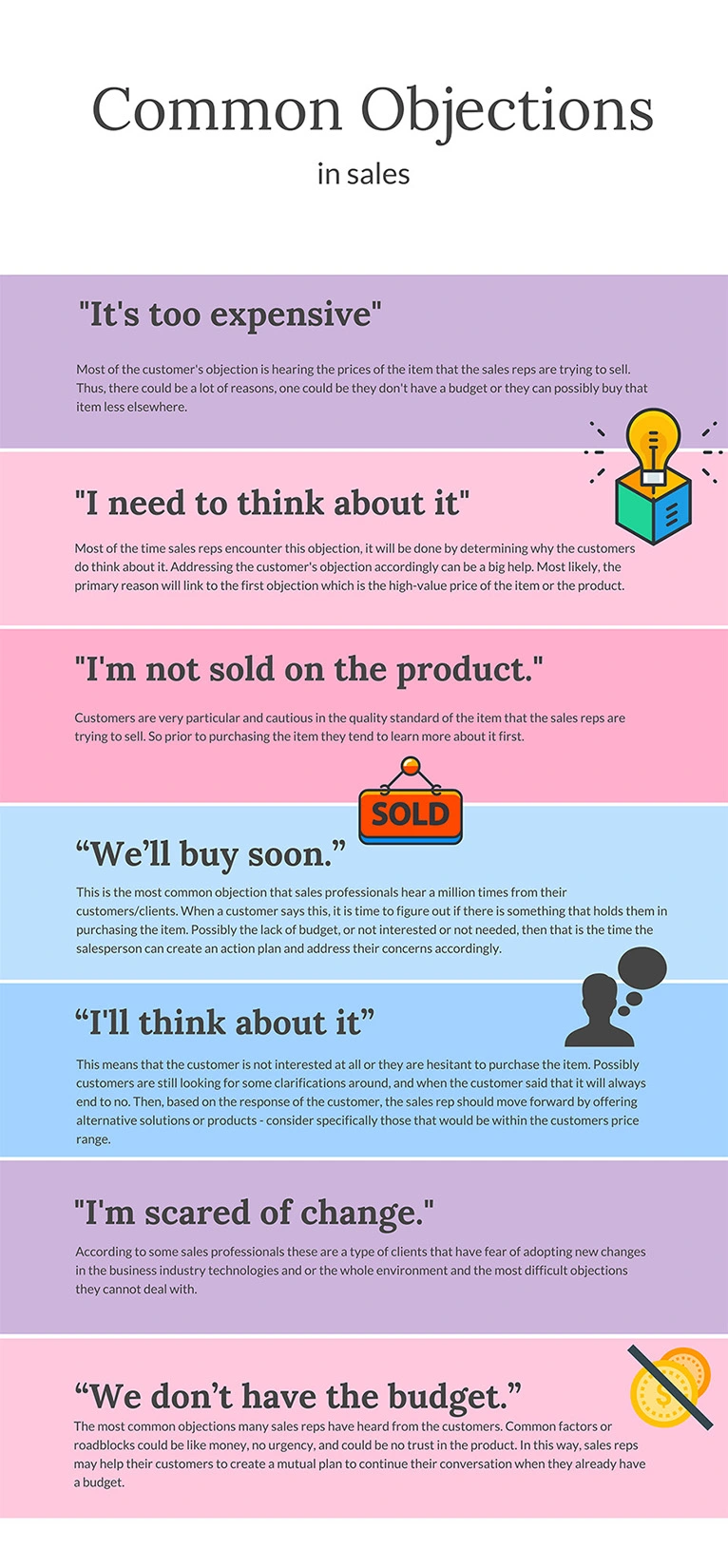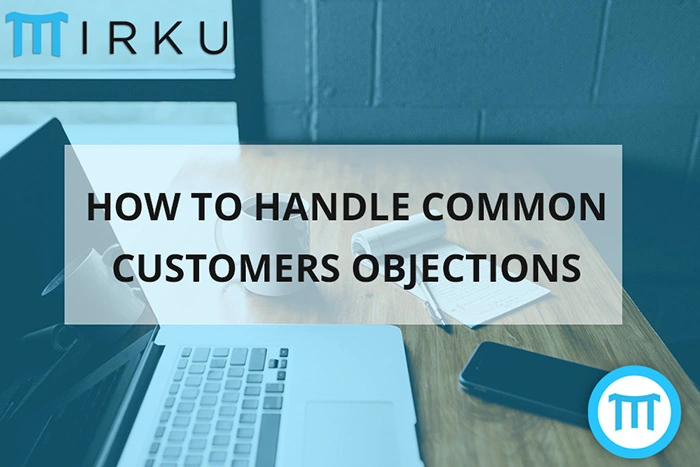I Object!
How to handle the most common customer objections, close that sale and keep your customer happy.
I bet anyone who works in sales will agree that a major obstacle in this field is hearing customer objections and complaints. What else could you find more frustrating than when being far along into a sale, almost driving to a close, when you suddenly find yourself in a pit of objections?
When that happens how should you respond? Is it a fright or flight scenario? Does this make you a lesser salesperson? The endless why’s keep pouring in and I kid you not when I say, these objections are all part of the game. You need not fret and lose hope, or roll about the floor like a child throwing tantrums.
You Know Why?
Customers are built the way they are and as salespeople, we have to understand that there is a certain level of truth to the adage “The customer is always right.” Client satisfaction is our motivation, and customer success is what we work so hard for.
Customer objections and complaints are addressed in a variety of ways, the following are the most common and here’s how to handle them. Get your act together and read on!
Remember that customers have concerns mainly about everything. From product quality, service reliability, and importantly, value for money. These factors are not to be considered as roadblocks, but instead, sales goals. It’s your duty to successfully engage the customers who have objections during the sales process.
Should handling customer objections and complaints make for the most crucial part of the selling process? Definitely not. There are strategies that you can use during this stage, and two of the most practiced are active listening and acknowledgment. Learning how to use these strategies are of utmost importance as it will guide and help you and your team throughout the process to understand what your customer is trying to say.
Napoleon Hill, the author of Think and Grow Rich once said, “The best way to sell yourself to others is first to sell the others to yourself.” Following this simple advice every time you handle objections and applying the strategies accordingly will help you and your team maintain a clean pipeline in focusing without losing your target customer.
Engaging in an argument with your customer is a big NO for salespeople. Keep in mind that we are building relationships founded on trust and when you fail miserably in pushing back your aggression, the outcome will always be disastrous for both you and the client.
Let us delve more into the most common customer objections salespeople encounter and the proper ways to address each one!
It’s too expensive.
Cash is king. It has always been and will always be. Value for money is often the bottom line for most customers and clients when they are poised to purchase something you are selling. Unless you see through the context of this objection positively, you’re screwed.
Keep your perspective clear and by employing the 2 basic strategies of listening and acknowledgment, you can easily take into account the status of the person right in front of you, the customer.
It is ethical for a salesperson to understand the predicament of the potential prospect. If the objection comes from a financial standpoint then perhaps you have positioned the sale in the wrong direction. If the nature of the same objection springs from a level of disinterest, then the average salesperson can actually push for a successful sale. It all depends on the skills and smarts you will employ.
Keypoint 1: Know Your Leverage
I need to think about it.
There’s nothing more diminishing for a salesperson to hear when trying to make a sale. This common customer objection does not have to be taken in the negative, in fact, it’s the other way around. When a customer or a prospect gives this objection, there is a hint of hope that you could actually seal this deal! Come to think of it, your customer is actually saying it out loud!
“ I need to think about it.” translates to, “Please tell me more about the product or service you’re selling.”, or “I need to think about (when, where, why, how) this product fits my current lifestyle.”
If anything, this objection is but an affirmation of interest from the client and never a roadblock to a successful point of sale. Your role is to keep your client or customer informed of all the benefits, advantages, and overall value of the product and service you are selling.
Keypoint 2: Know Your Advantage and Strengths
It’s the product
Customer satisfaction. I bet you’ve come across these words everyday as a salesperson. Nothing beats the pride of making a sale and keeping a single customer smiling with satisfaction. How do you achieve this feat as a salesperson?
First, you should know the product or service you are selling by heart. Knowing is half the battle, and keeping your customer informed even during after sales will help to create and foster a customer relationship like no other.
Second, it would be a shame if you as the first contact for a product or service will be unreachable at certain times, therefore make yourself an annex to the service and product you are selling.
Finally, once you get to the point of merging your persona with the product or service bought by the customer, make sure that you embody customer satisfaction in everything you do. The first and second steps help to solidify trust and confidence, but your presence, that makes the sale priceless.
Keypoint 3: You are the product.
We’ll buy it soon
The salesperson can be likened to a swordsman preparing for battle. He needs to have razor sharp sales pitches ready to cut into any objections, even when the customer ups his defense with the classic “We’ll buy it soon” line.
The average salesperson would opt to charm the customer with every possible product or service characteristic, but that could only do so much.
Use this cliche to your advantage. Counter the timeline defense your client used against your pitch with the same mirror technique, but albeit more effectively. You can ask the customer how far long it will take for him to reach a decision. Or perhaps you could up your sales offer with a promotion whenever accessible, like discounts on a limited run, a freebie package only for your customer.
We’ve heard this battle cry almost every day. A million times over from our customers or clients. The right time to figure out if there is something that holds them in purchasing your product is now.
There are a lot of ways to skin a cat, but when you’ve got a blunt edge sword to make the sale, you only have trauma to attend to.
Keypoint 4: Time is on your side.
We don’t have the budget.
Is this a common objection you hear daily? Just when you’re about to close a sale, that’s where the budget issue typically comes in. Worry not, that objection might just be a redirection.
As a determined salesperson, you can keep your customers interested by finding out what works for them. Ask them questions like “How much do you think it should cost?” or “How much do you intend to spend on this solution?” Answers to these questions give the salesperson options to close the sale sometime in the future. Remember that you are there to help and guide them towards making the decision in your favor.
Understanding the prospect and their capacity to pay for a product or service will help you frame any scenario objectively, whatever the nature of the customer’s objection. Give yourself a pat on the back for perseverance in chasing the opportunity of hitting your goal.
Keypoint 5: Take objections as redirections.
The Fear of Change
The fear of change can be one of the greatest barriers for prospects to purchase.
Not only do customers need affirmation that they made the right choice, but it has to feel 100% right. Regardless if the prospect is persuaded of a product or service from a rational standpoint, the challenge remains whether they are willing to conflict with their gut.
Do you think your clients are afraid of change?
Perhaps because they are just comfortable with the product or service they are currently using that making a change is too much for them.
The first rule in dealing with this objection is to acknowledge their fears. Client’s fears are real and acknowledging the fact that not everyone is good at adapting to new changes will help you come up with a strategy, instead of downright shooting down the point of sale. We need to understand the client in order to help them overcome their fears.
Providing the customer a bulletproof reason as to the how’s or why’s your product or service offers a better quality, will keep them informed. Compulsion through proper presentation will lead the customer to embrace the changes being offered.
Help them navigate the process, collaborate with them, and always make sure that you employ a strategy that keeps the client’s needs in focus. Being there from beginning up until the end is a big responsibility and is not for the faint of heart.
Keypoint 6: FEAR and SALE have four letters. Conquer both!
Put your game face on!
It’s hard to play tug of war in the sales arena. You can’t keep tugging when your customer is pulling on the other side. Instead of doing so, tread the same path or direction where you find your client moves through then let your personality and skills as a salesperson come into play.
Your character stands as your strongest point. Honed to be at its finest, your core as a salesperson should exhibit confidence and resilience. Your strategy will show you where to dig deeper into your clients’ desires and will lead you in the direction of a qualified sale.
Your resilience provides you the determination to improve despite tough situations, assisting you to climb even the steepest obstacles. Your selling skills get better with every perfect close. That could actually mean brawling with disapprovals every single day but that’s what makes you bounce back stronger.
Along with all your dispositions, it’s time to bring your expertise into the game no matter what objections come your way. Because that’s the Mirku way!

Unsure how to handle your business finances from the back-end? Schedule your Power Hour consultation for free.
The Power Hour is a comprehensive analysis of your business with actionable steps to meet your professional goals. It is a comprehensive action plan unique to every business, regardless of scale or size.
The Power Hour is my invitation to you for an exclusive all-access full-hour private session for a comprehensive analysis of your business. The Power Hour is a gift I want to share with you.
